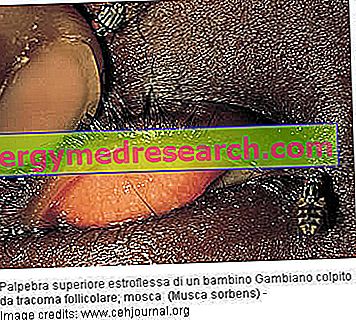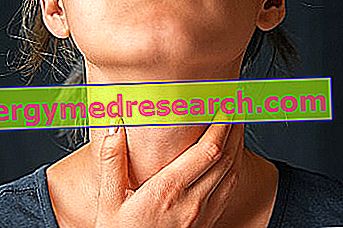Definition of Anorgasmia
Anorgasmia is defined as the inability to reach the peak of pleasure, despite intense and prolonged sexual stimulation; like vaginismus and dyspareunia, anorgasmia also fits into the category of disorders that hinder love.
There is talk of masturbatory anorgasmia in the case of inability to reach orgasm following masturbation, and coital anorgasmia when the inability to satisfy pleasure depends on the traditional sexual act.

Incidence
Anorgasmia can afflict men and women, although it is a phenomenon much more discussed by the fairer sex; statistics show that anorgasmia is one of the most frequent sexual disorders in women. It seems that about 12% of women with a regular sex life have never experienced orgasm and 34% do not perceive the shock of pleasure during penetration. The most puzzling datum refers, undoubtedly, to 47% of women who, according to estimates, pretend orgasm.
Still, some women, when they perceive the discharge of pleasure that increases more and more, are blocked, not exceeding the limit of the complete sexual satisfaction; anorgasmia can greatly afflict the subject and, indiscriminately, the man and the woman are overwhelmed by a considerable state of anxiety.
Classification
Anorgasmia is a disorder that can be divided into several levels:- Primary anorgasmia (also called absolute or primitive): the subject has never reached orgasm since the beginning of the sexual life. Probably, the triggering cause that causes the primitive form of anorgasmia is due to sexual inhibitions and unfounded fears, which prevent the woman (or man) from "dissolving" the inhibitory brakes and from giving herself completely to love.
- Secondary anorgasmia : the affected subject progressively loses the ability to reach orgasm, despite a period of "normality" referred to orgasm responsiveness. Generally, women and men suffering from secondary anorgasmia already had weaknesses of a sexual nature.
- Random (or situational) anorgasmia: the subject becomes anorgasmic based on the situation, the partner and the environment. Generally, especially in women, the condition appears to be absolutely reversible and most of the time, the simultaneous clitoral stimulation (superficial) and vaginal (deeper) allows the achievement of orgasm.
- Generalized anorgasmia: anorgasmia does not depend on the situation created, but always presents itself.
- Pure coital anorgasmia : the attainment of pleasure is impossible through coitus, but orgasm can be perceived following a manual or oral stimulation.
- Anorgasmia acquired from urge incontinence : the subject is unable to experience the shock of extreme enjoyment due to a fear (sometimes unfounded) of losing control during orgasm and urinating.
However, in most cases, any type of anorgasmia reflects a disturbed relationship with sex and pleasure in general.
Possible causes
The origin of anorgasmia is not clear and still remains the object of study for many Authors, since, as analyzed above, every woman and every man reacts in a different and personal way to stimuli and impulses of a sexual nature. However, some triggering factors have been identified that significantly affect the manifestation of anorgasmia.
Anorgasmia could be caused by drugs, or doping substances, physical trauma at the genital level (infibulation, Lichen sclerosus - chronic inflammation of the skin and mucous membranes that can also affect the genitals, clitoral areas), dyspareunia, vaginismus, stress, anxiety. In general, the causes of psychological origin are the most frequent: excessive self-control, performance anxiety and immense attention to the mere pleasure of the partner.
Psychological-sexual traumas and carnal violence are also important causal factors affecting anorgasmia: in the latter case, generally, the affected subject presents a complicated and enigmatic experience, so a psychological therapy is absolutely recommended to repress fears that they are rooted in the past.
As far as drugs are concerned, attention must be paid to psychotropic and antidepressant substances: the use of drugs against depression has a significant effect on sexual life. From the very first treatments, in fact, the subject presents considerable difficulties for achieving pleasure (anorgasmia, impotence, decreased desire, premature ejaculation without orgasm): the sexual dysfunctions caused by antidepressant drugs can last for a relatively long period, even in following the interruption of drug treatment.
Again, ignorance, cultural and religious restrictions, self-denial, lack of sexual education, lack of consistent family support, inexperience, associated with disorders of the male partner (impotence, difficulty in reaching and maintenance of erection) can heavily condition anorgasmia.
Reflections
In couple relationships, the desire to satisfy the partner, to satisfy his ambitions and his desires is indispensable, but one must never forget to love oneself . The sexual act should not satisfy only one of the two partners: when the search for orgasm is limited to the satisfaction of the individual, one runs the risk of turning pleasure into a reductive fulfillment and the sexual act translates into a (sad) personal outlet.
It is good to point out that anorgasmia is not synonymous with impotence or lack of pleasure, but the condition refers only to the moment of (missed) orgasm.
Erroneously, orgasm tends to coincide with male ejaculation; but it is not so every time, since it has been shown that a man suffering from anorgasmia still manages to have an ejaculation (albeit often delayed), without experiencing the maximum point of sexual satisfaction.
Anorgasmia is a pseudo disease that results in a real disorder that hinders love.



